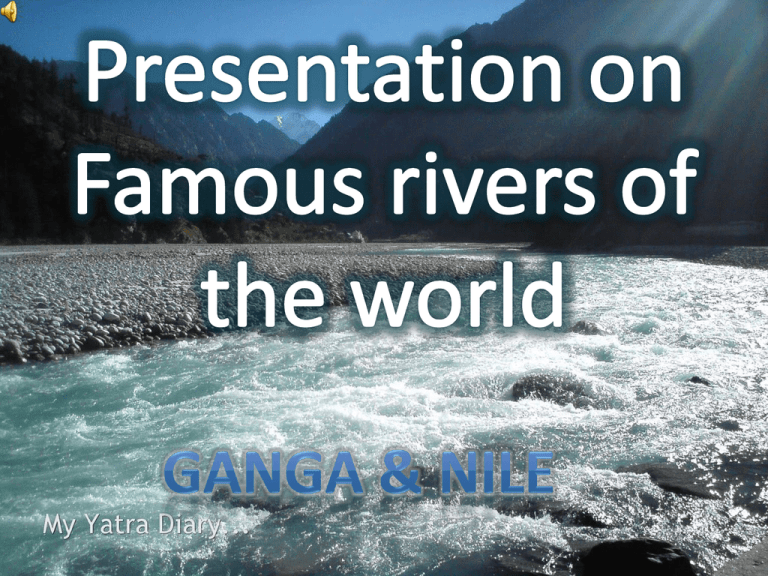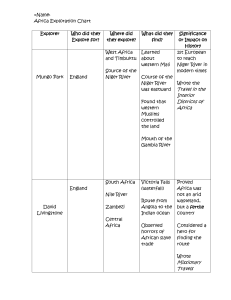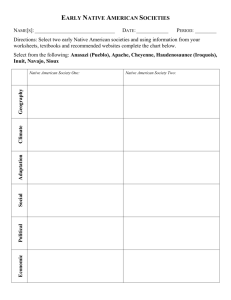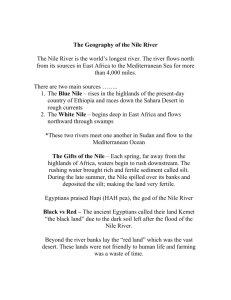Presentation on Famous rivers of the world
advertisement

It Flows through India and Bangladesh. It Rises from Himalayas and empties into Bay Of Bengal. During It’s 2,525 K.M. long journey it pass many Indian and Bangladeshi states. Ganga is formed by the joining of 5 Major rivers. Alaknanda, Bhagirathi, This show the meeting Of Mandakini,Pindar & Alaknanda with Bhagirarthi at Dhauliganga form Ganges. Devprayag. It rises from Gangotri Glacier 3,892 m above the sea levels. After Flowing 250 KM.s in Himalyan Vallies it then enters to the mountains of Rishikesh. The picture show the whole It then enters in the plainscourse in the Haridwar. of Ganga and it’s Tributaries. From here the river begin to flow towards southeast direction. It then flow 800 KM. from the cities of Kannauj, Kanpur & Farukhabad. Along it’s way it is Joined by many more rivers. The Ganges is a sacred river to Hindus along every fragment of its length. They pay homage to their ancestors and to their gods by cupping the water in their hands, lifting it and letting it fall back into the river. The picture show Hindus This picture show people floating washing their sins by shallow clay dishes with oil They offer flowers andfilled rose petals and float shallow clay dishes filled with oil and lit with and lit with wicks wicks. bathing in Ganga. While leavingshow back home The picture they carry small quantities of river water a Hinduwithburning them for use in rituals. his loved one When a loved one dies, after death Hindus bringnear the ashes of the deceased person to the Ganges River. Ganga Ghat Every 12th Year a huge bathing fair is held at Ganga ghat called Kumbh mela. Thousands of men and women attend, and the auspiciousness of the festival is in part attributable to this. This Picture show the scene of Kumbh mela. The Ganges and its tributaries have been used for irrigation since ancient times. There are Many canals which regulate the The picture flow showofthe Field water to fields. irrigated byAgricultural Ganga’s Water. Ganga is in the list of 5 most polluted rivers in the world. The Ganges suffers from extreme pollution levels, which affect the 400 million people who live close to the River. Sewage from many cities, industrial waste and religious offerings wrapped in nondegradable plastics add large amounts of pollutants to the river . The problem is exacerbated by the fact that many poorer people rely on the river on a daily basis for bathing, washing, and cooking. Varanasi releases around 200 million litres of untreated human sewage into the river each day. After passing through Varanasi, and receiving 32 streams of raw sewage from the city, the concentration of fecal coliforms in the river's waters rises from 60,000 to 1.5 million The picture show the polluted Ganga. The Nile is major north-flowing river in north-eastern Africa. It is the longest river of the world. The Nile is an "international" river as its water resources are shared by eleven countries. Nile is formed by meeting of two main rivers: Blue Nile & White Nile. The White Nile is considered to be the headwaters and The pictureprimary showstream the of meeting the Nile itself & blue Nile meet it later. of blue and white Nile. Lake Victoria & Lake Tanganyika are initial sources of water for Nile. Then Nile reach Ripon falls from where it enters Uganda. Then the River flows to the South Sudan which is followed by Sudan. The picture show that all Egyptian civilizations were settled near Nile. Nile played an Important role in establishing Egyptian civilization. most of the population of Egypt Lived along the parts of the Nile. During the late-Miocene Messinian salinity crisis when the Mediterranean Sea was a closed basin Nile was the major source of water.






